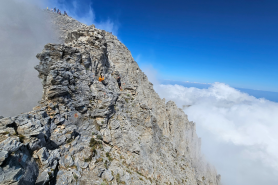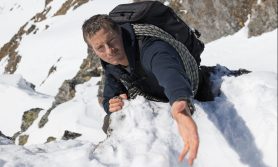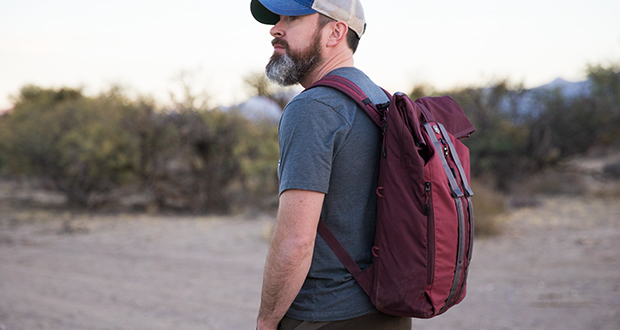

Being fortunate enough to hike in a wide variety of climates around the country has taught us an important lesson: it matters what you put in your pack. If we’re heading out for a few hours and want our packs to be as light as possible, we make decisions based on the type of geography and climate we’re hiking in. Here’s what we’ve learned about how to pack a daypack for three different environments we hiked in this year.
Videos by Outdoors with Bear Grylls
How To Pack A Daypack For The Desert
When we were in the Mojave Desert wicking clothing and the ability to adjust to temperature changes was a must. Zip-off pants were handy, and a thin head sock was great for windy dusty conditions. Obviously, water is crucial in dry desert conditions, so a water filter and lightweight flexible canteens helped us out a lot.
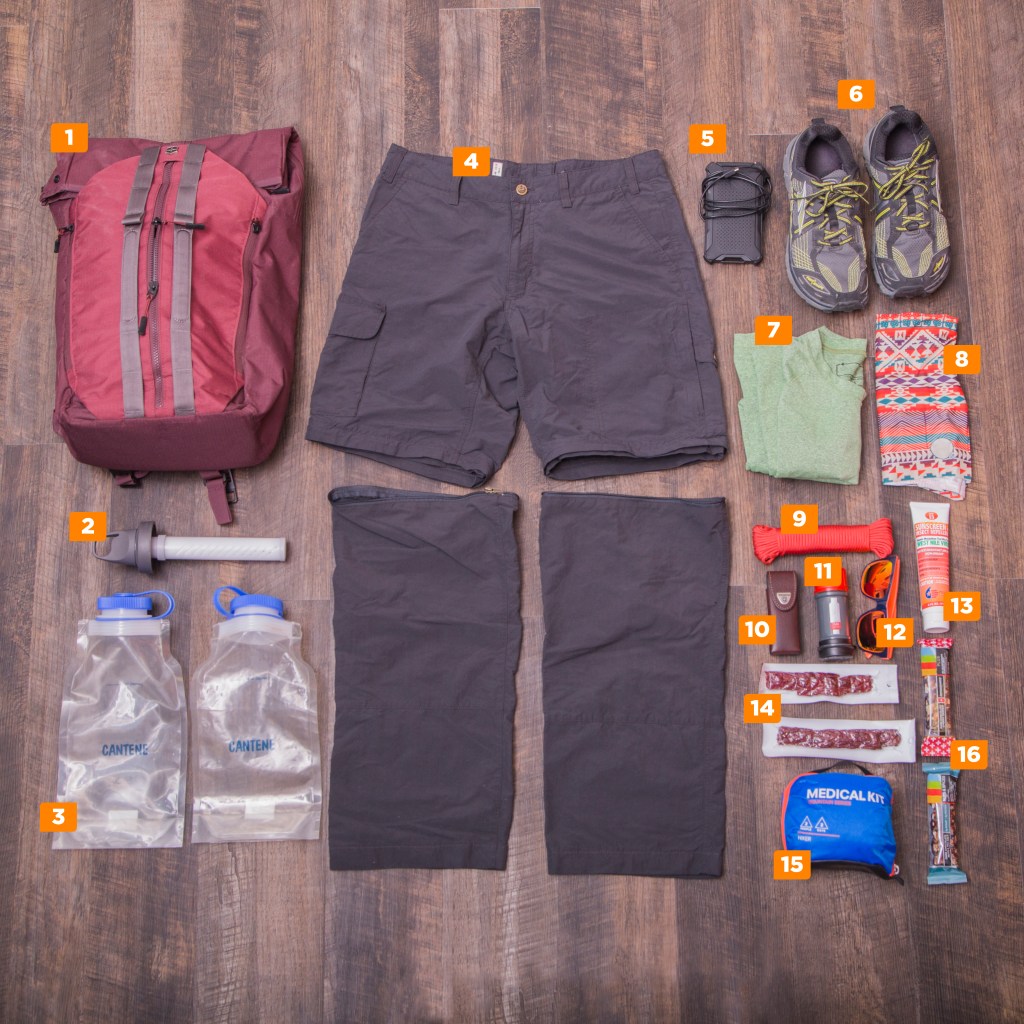
- Victorinox Almont Series Backpack
- Water filter
- Lightweight canteens
- Zip-off hiking pants
- External battery
- Breathable trail shoes
- Synthetic wicking t-shirt
- Thin lightweight head sock
- Paracord
- Victorinox Swiss Army SwissTool Spirit XC
- Stormproof matches
- Shades
- Sunscreen
- Jerky
- Ultralight medical kit
- Trail bars
How To Pack A Daypack For Cold Windy Conditions
On the east coast in Acadia National Park, the hiking conditions were a bit unpredictable. It could be sunny, but a cold wind would come in from the ocean and try to put a chill in our bones. It didn’t take long for us to grab gloves and a neck warmer, in addition to full base layers before heading out for a hike. You can always take it off, but if you don’t have it you’re gonna have a bad time.

- Victorinox Swiss Army Vx Touring Backpack
- Water filter
- Lightweight canteens
- Windbreaker
- Merino wool base layer – upper
- Merino wool base layer – bottom
- Merino wool neck warmer
- Hat
- External battery
- Waterproof hiking boots
- Gloves
- Extra wool socks
- Paracord
- Victorinox Swiss Army SwissTool Spirit XC
- Stormproof matches
- Shades
- Sunscreen/bugdope combo
- Jerky
- Ultralight medical kit
- Trail bars
How To Pack A Daypack For Wet Weather
We didn’t know what wet was until we spent a week on the Oregon Coast. It was a battle that never seemed to end. Still, we faired alright by always having the right gear with us. A rain jacket and rain pants (Clint fell in love with waxed pants) were crucial, but a few other items made it easier. A small microfiber towel is nice for drying camera gear, and an emergency poncho weighs almost nothing and can be used in a variety of ways. We had both a waterproof case for smaller items and a touch-sensitive waterproof bag for phones. No need for an expensive case, as these worked out well.
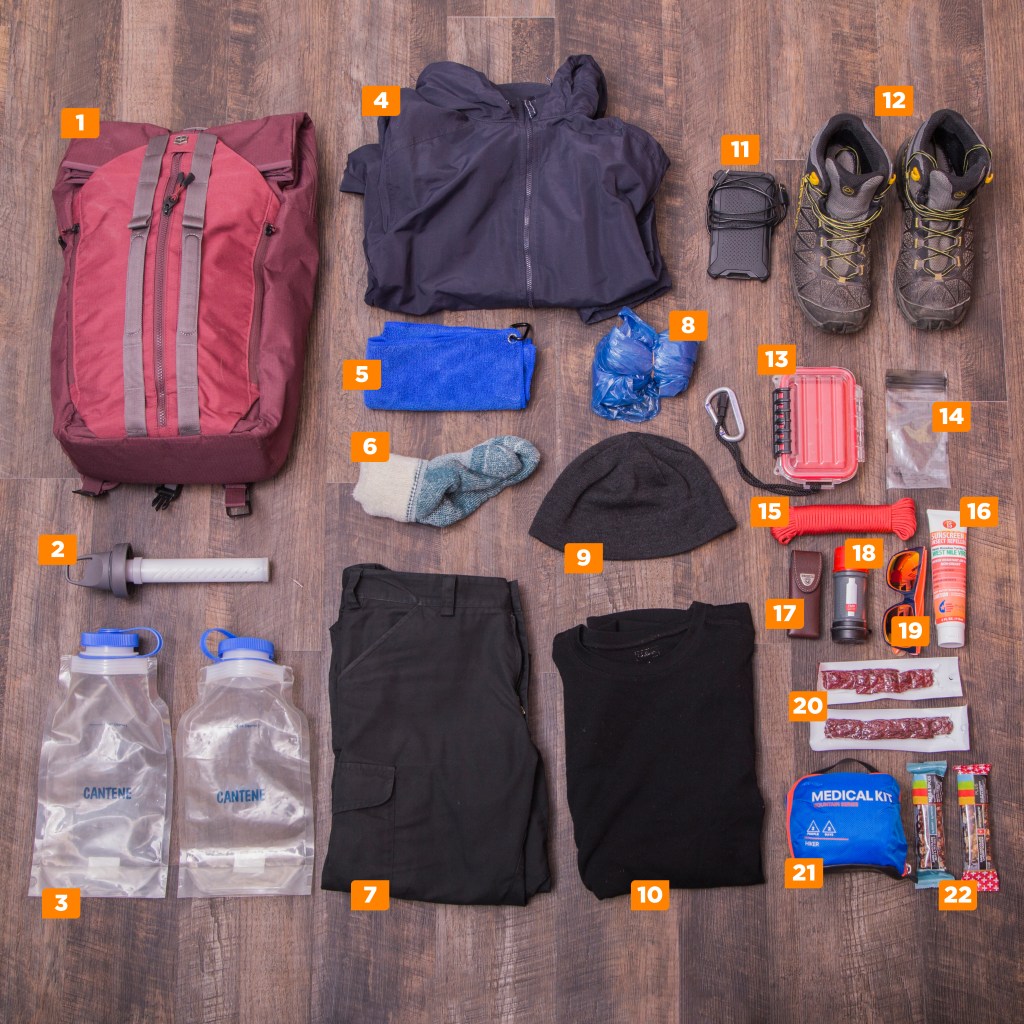
- Victorinox Altmont Series Backpack
- Water filter
- Lightweight cantenes
- Waterproof jacket
- Small microfiber towel
- Extra wool socks
- Rain pants or waxed pants
- Emergency poncho
- Merino wool hat
- Merino wool base layer – upper
- External battery
- Waterproof hiking boots
- Waterproof case for small items
- Waterproof bag for phone
- Paracord
- Sunscreen/bug dope combo
- Victorinox Swiss Army SwissTool Spirit XC
- Stormproof matches
- Shades
- Jerky (always)
- Ultralight medical kit
- Trail bars








